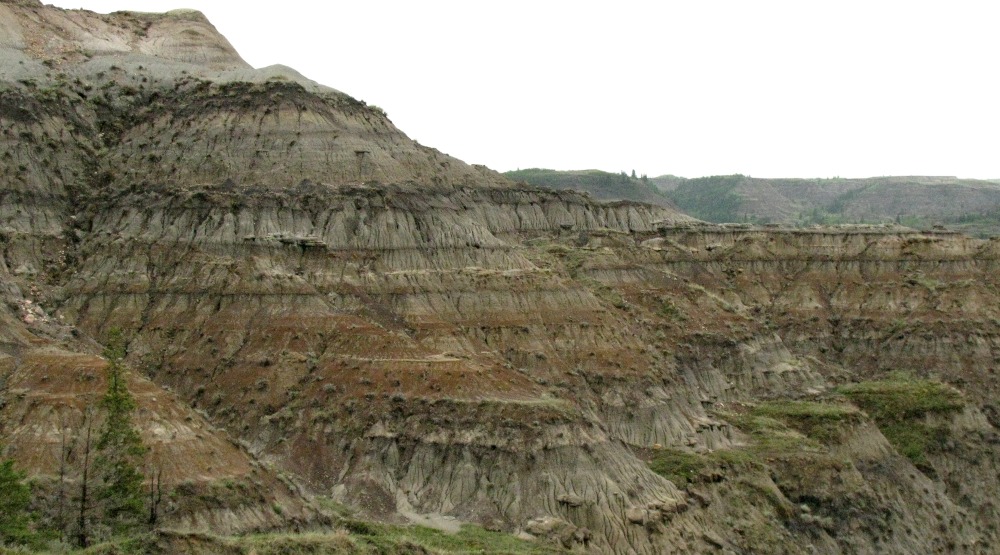
Badlands, Dry Island Buffalo Jump Provincial Park, Alberta (© Magi Nams)
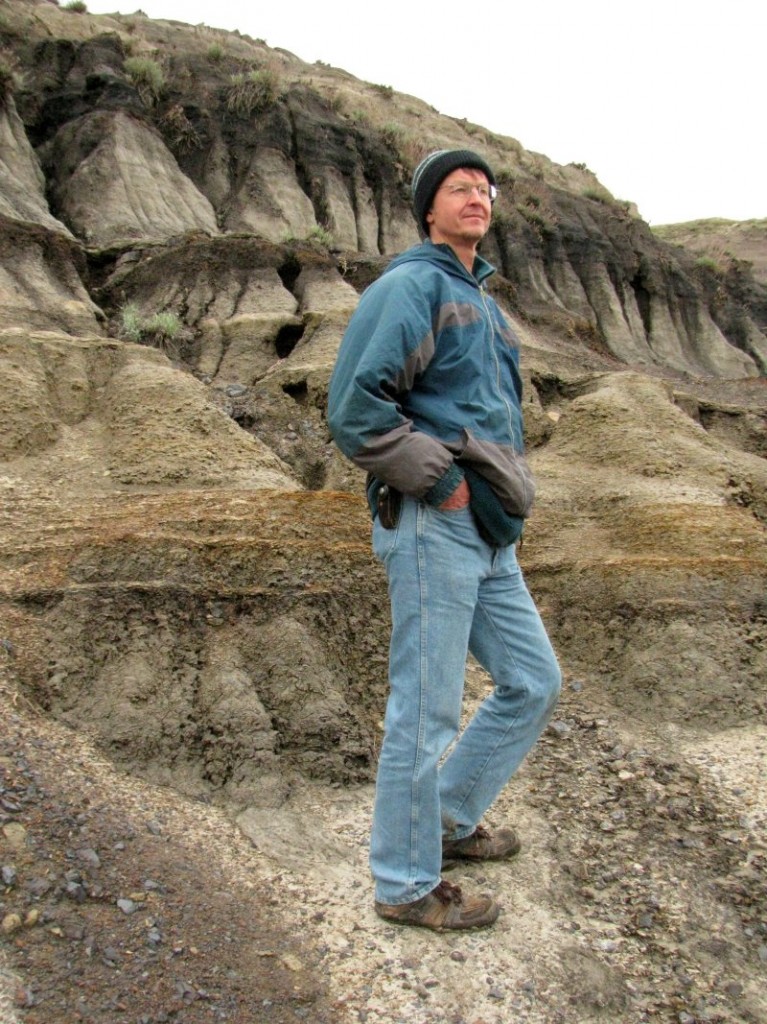
Vilis and Rills in Horseshoe Canyon, Drumheller, Alberta (© Magi Nams)
Our Nova Scotian winter teeter-totters between cold clarity dusted with snow and balmy bouts of rain. After days of brisk dawns with the outdoor thermometer reading in the mid to high teens below freezing, today brought downpours driven by a wild south wind and temperatures soaring to 10°C.
Rain also wreaked havoc with Vilis’s and my exploration of the Canadian badlands in southern Alberta in May of last year. We enjoyed spectacular views out over water- and wind-eroded rock formations characterized by coulees (steep-sided valleys), hoodoos (isolated rock towers capped by erosion-resistant rock), and rills (deep drainage clefts created by water erosion), but had a slippery job on our hands, or should I say under our feet, to hike down into the coulees. Moisture-laden silt and gravel soils slid beneath our shoes like grease, causing us to slip and slide even on gentle inclines. The steep ones would have been a wild ride down and potentially impossible to ascend.
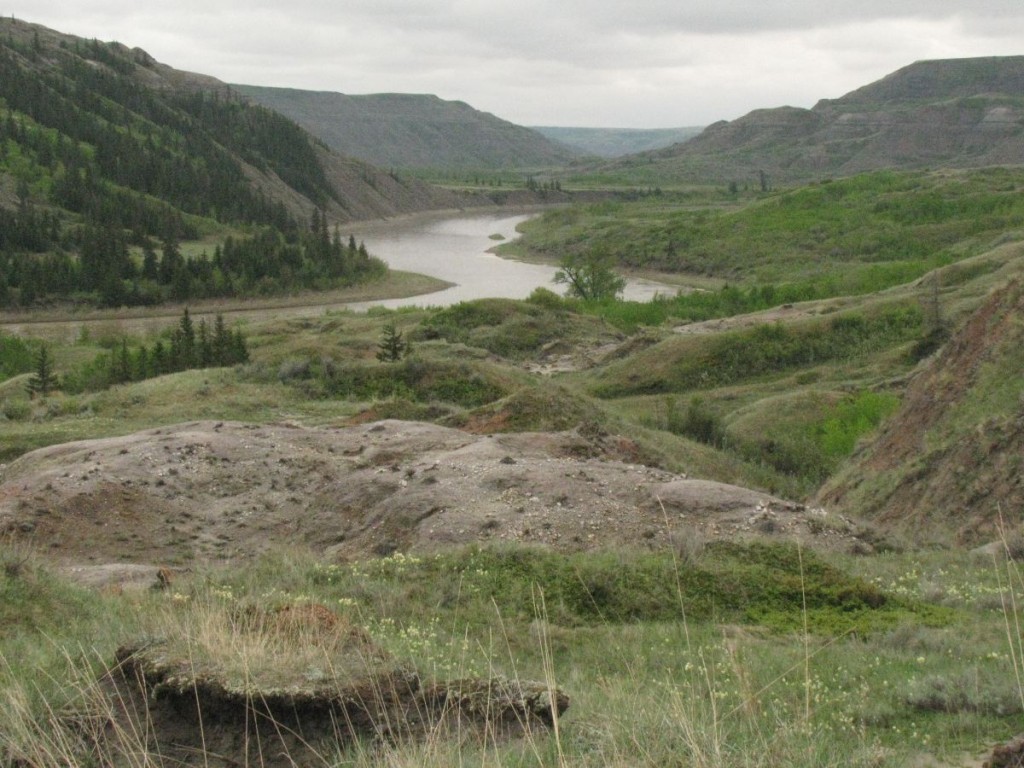
Red Deer River, Dry Islands Buffalo Jump Provincial Park (© Magi Nams)
In Dry Island Buffalo Jump Provincial Park north of Drumheller, we stepped and slid our way down a mucky gravel access road to the banks of the murky Red Deer River. This river winds its way across southern Alberta, eroding sedimentary rock into plateaus and canyons and exposing layer upon layer of fossil-rich stone, including the world-famous dinosaur bone beds of Dinosaur Provincial Park. Called ‘mauvaise terre’ or ‘bad land’ by the French Canadian explorers Francois and Louis Joseph de la Verendrye, the canyons and coulees carved out of the prairie by the Red Deer River and its tributaries offered no opportunity to settlers for agriculture, so the name ‘badlands’ stuck.1
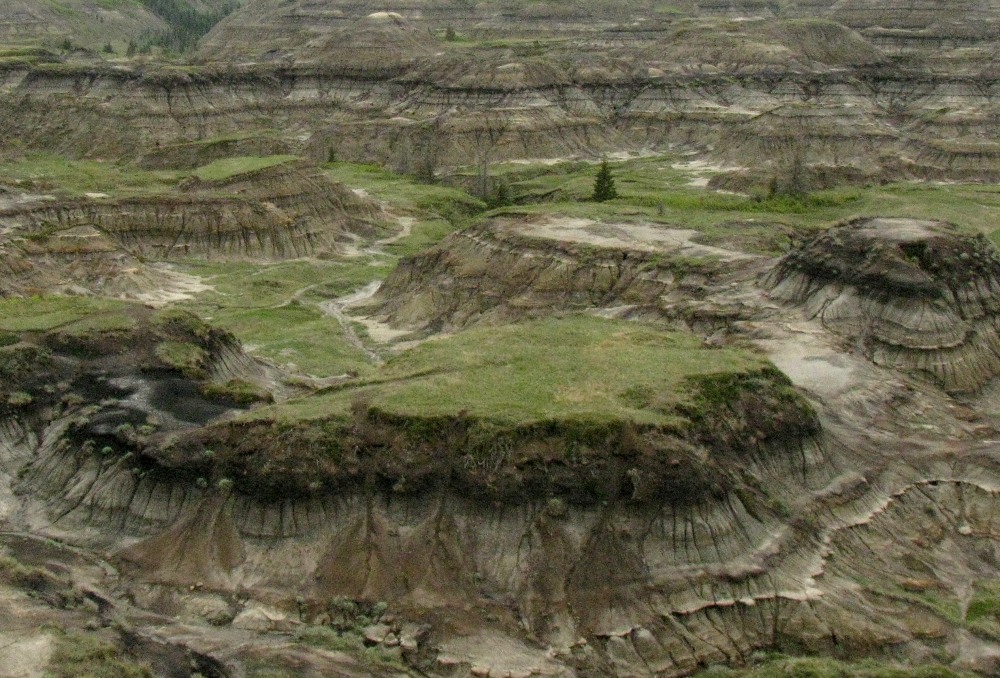
Eroded Rock Formations, Dry Island Buffalo Jump Provincial Park (© Vilis Nams)
Despite intermittent rain, badlands wildlife abounded. The voices of a catbird, Baltimore oriole, brown-headed cowbird, least flycatcher, yellow warbler, common yellowthroat, dark-eyed junco, crows, clay-coloured sparrow, Canada geese, and spotted towhees (a lifer for me) splashed vocal colour against the damp air. Mountain bluebirds, resplendent in vivid blue plumage, perched on lookouts. A ruffed grouse drummed his springtime courtship call. Coyotes howled.
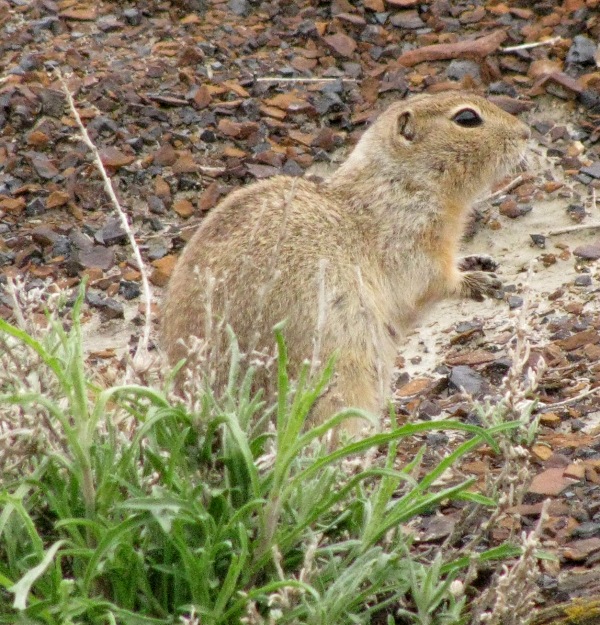
Richardson’s Ground Squirrel (© Vilis Nams)
Heading south, we checked out Horseshoe Canyon near Drumheller, navigating our way into and out of the canyon by slowly picking our way down greasy slopes, stepping on vegetation wherever possible, and by climbing a steep, vegetated incline on the way up. We spotted some of the same birds as at Dry Island Buffalo Jump, but others as well – robins, western meadowlark, Swainson’s hawk, mourning dove, and Sprague’s pipit. Richardson’s ground squirrels scampered across bare hoodoo sides and nibbled at greening vegetation. We walked the coulee bottom, spotting ungulate tracks (likely mule deer) and followng a trail of huge canid tracks (wolf, we guessed) that meandered through the valley. Recent flooding was evident in water-swept grasses all pointing in one direction, reminding us of the danger of flashfloods in canyon country.
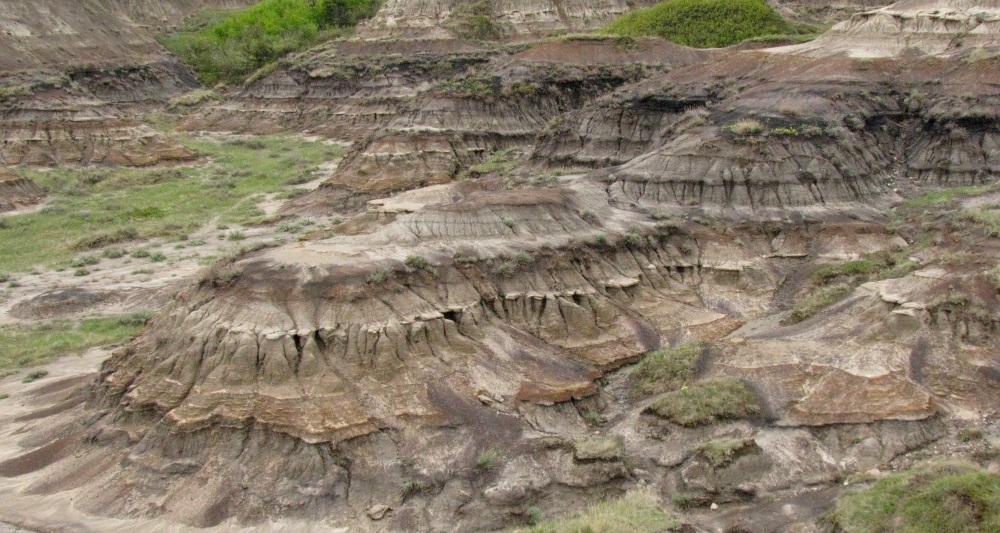
Badlands, Horseshoe Canyon, Drumheller (© Vilis Nams)
Our last stop in the Alberta badlands was Horsethief Canyon west of Drumheller. A vast expanse of rugged, mounded plateaus and water-carved coulees that stretched toward the horizon, the canyon beckoned us with obvious trails etched on its rocky slopes and valley floor. However, accessing those trails would have required a muddy slide down a cliffside with no certainty of a safe route up. Vilis and I opted to enjoy the view and made plans to return in drier conditions.
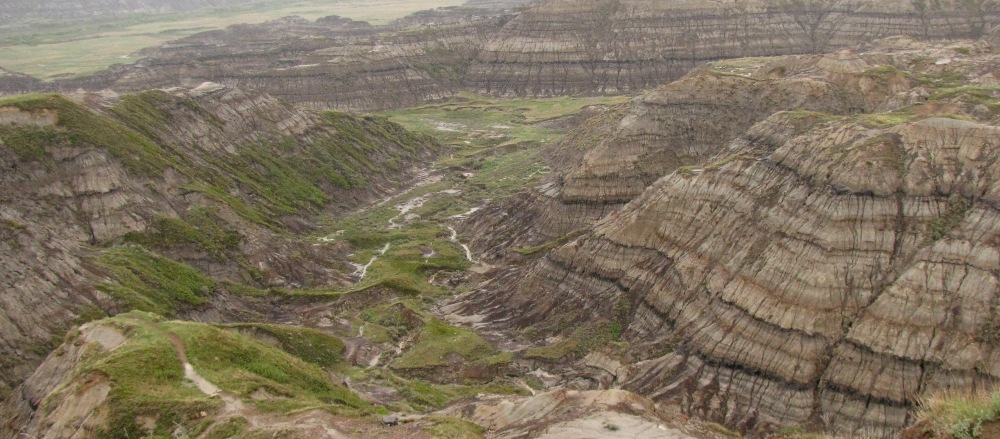
Horsethief Canyon, Midland Provincial Park, Alberta (© Vilis Nams)
Reference:
1. Nature Conservancy of Canada. Geomorphology. Interpretive sign at Horsethief Canyon, Midland Provincial Park, Alberta.


